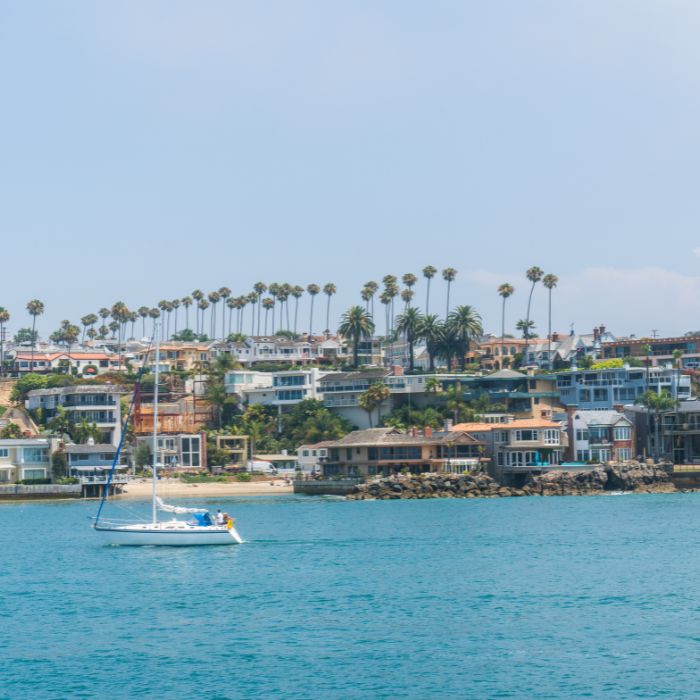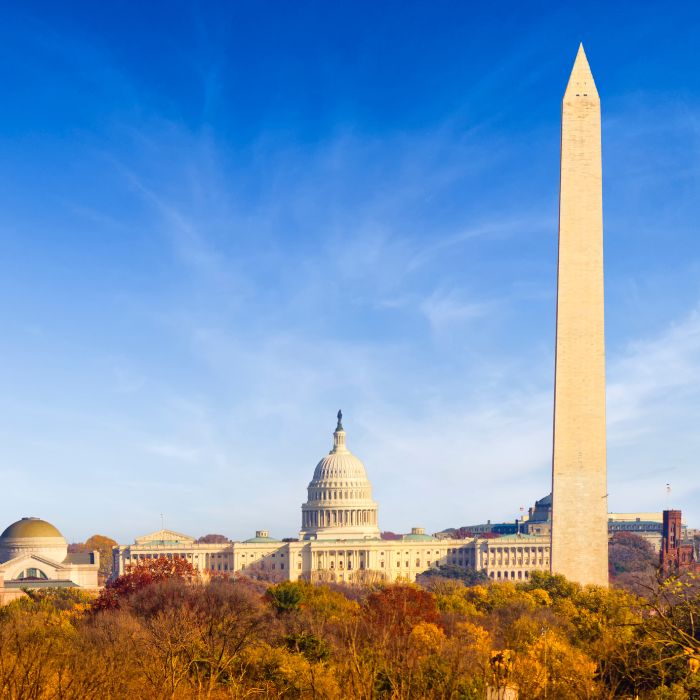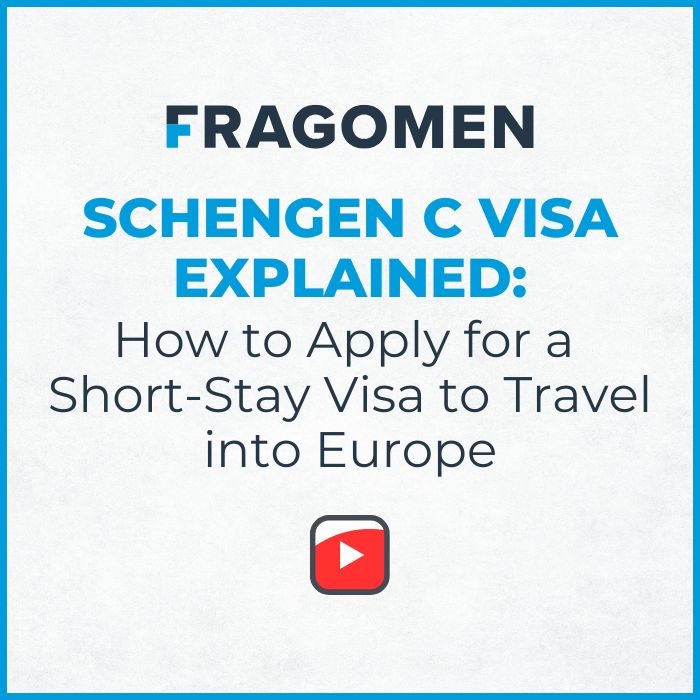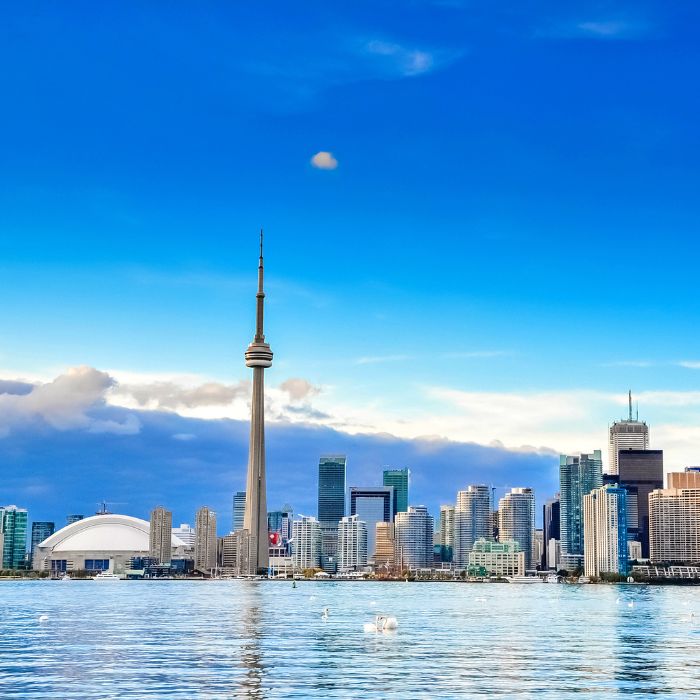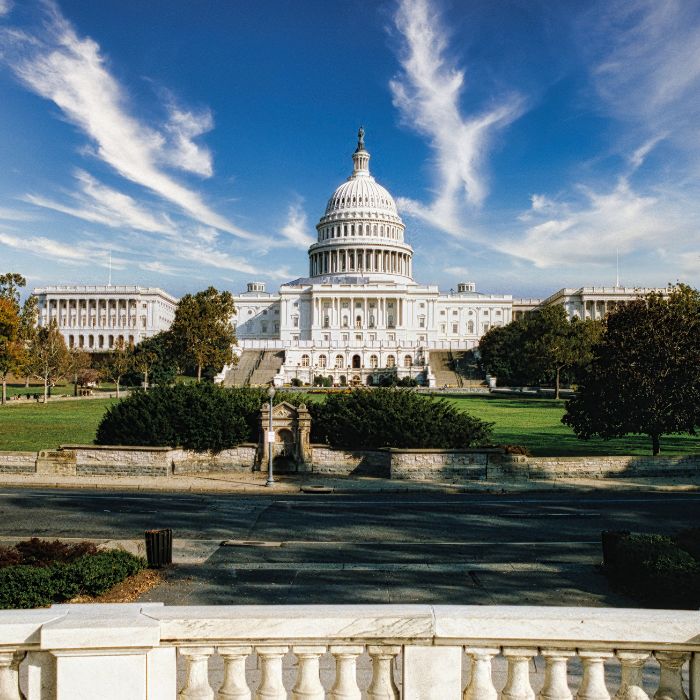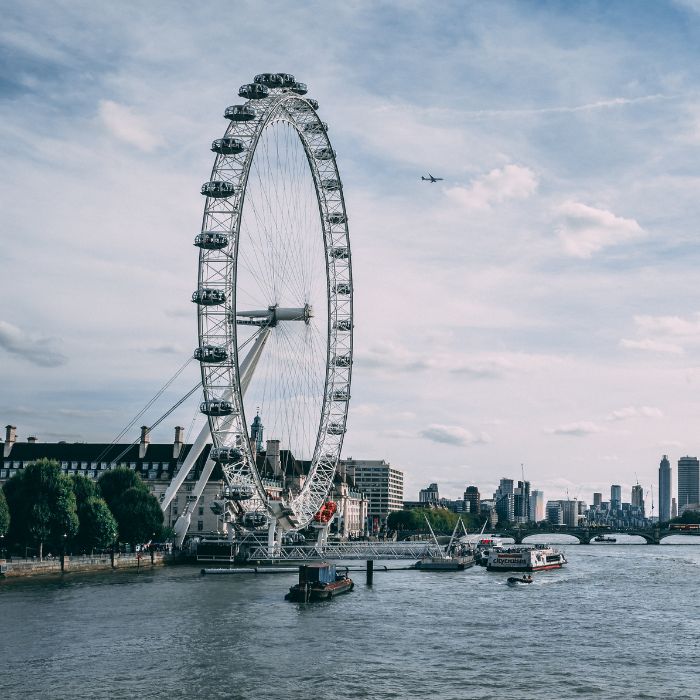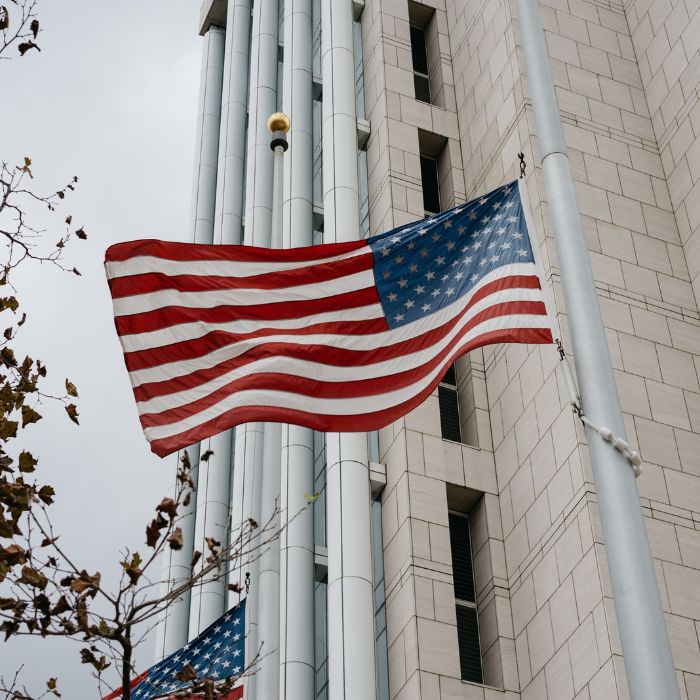Travel Tips for Foreign Students on OPT or Planning a Change of Status to H-1B
April 3, 2019
At a glance
- If you are an F-1 student who has applied for or is working on optional practical training (OPT) or is the beneficiary of a petition to change status to H-1B in this year's H-1B cap filing season, make sure you understand the risks and requirements of international travel.
- Traveling abroad could affect your F-1 status, your ability to change status and your ability to reenter the United States.
The issue
Are you an F-1 student who has applied for or is working on post-completion optional practical training (OPT) or who is the beneficiary of an H-1B cap petition and a request to change status starting on October 1, 2019? If so, you must be aware of the requirements and risks of traveling internationally, whether you are in an ongoing course of study, your 60-day grace period, a period of OPT (including a STEM extension), or the “cap gap” – the period between the end of your course of study or OPT and October 1, the date that a timely-filed H-1B petition and change of status on your behalf will take effect.
The following are Fragomen’s answers to frequently asked questions about F-1 students and international travel. Questions 1 - 4 address issues faced by F-1 students in their initial 12 months of post-completion OPT and the related 60-day grace period. Questions 5 - 6 address issues faced by F-1 students during a STEM OPT extension period and related 60-day grace period. Questions 7 - 14 focus on F-1 and J-1 students seeking a change of status to H-1B. Question 15 discusses the impact of the Trump Administration’s travel ban on nationals of Iran, Libya, North Korea, Somalia, Syria, Venezuela or Yemen.
TRAVEL DURING INITIAL GRANT OF POST-COMPLETION OPT
1. I am an F-1 student working on my initial 12-month period of post-completion OPT. I am not the beneficiary of a petition to change my status to H-1B this year. How does international travel affect my status?
If USCIS has approved your request for an initial 12-month grant of post-completion OPT and has issued your employment authorization document (EAD), you should be able to leave and reenter the United States to begin or resume OPT employment, provided that you have an OPT job or job offer and you do not have a pending or approved application to change status to another non-immigrant category. (If you are the beneficiary of a petition to change status to H-1B under the H-1B cap, see Questions 7 - 14.)
If you decide to travel, you should carry the following items with you:
- A valid passport;
- A valid F-1 visa stamp (unless you are Canadian). If your student visa has expired, you will need to apply for a new F-1 visa stamp to reenter the United States as a student (see Question 4 for more details);
- A Form I-20 that has been endorsed for travel and OPT by your designated school official (DSO) within the last six months;
- A valid EAD; and
- A letter from your OPT employer that verifies your employment. If you do not have a valid job or job offer, you will not be readmitted and your OPT may be terminated.
Keep in mind that the number of days you spend outside of the country while your EAD is valid may be counted against the regulatory limit on unemployment during the OPT period. Current USCIS rules require an F-1 student to have no more than 90 days of unemployment during an initial 12-month grant of post-completion OPT. (See Question 5 for the allowable period of unemployment during a STEM OPT extension.) Unemployment includes time spent in or outside the United States while unemployed, but does not include international travel that is part of your OPT employment or that takes place during leave authorized by your OPT employer.
2. Can I travel abroad while my initial request for post-completion OPT is pending?
There are risks involved in traveling before your post-completion OPT request has been approved and you receive your OPT EAD, particularly if you have completed your course of study. Please reach out to your Fragomen attorney to discuss your options for traveling under these circumstances.
If you have a pending request for a STEM extension of OPT and are considering international travel, see Question 6.
3. Can I travel abroad and reenter during the 60-day grace period after completing F-1 study or OPT?
If you will not apply for OPT, a STEM OPT extension or a change of status to another nonimmigrant category, you will not be able to travel abroad during the 60-day grace period and be readmitted in F-1 status. This is in keeping with the purpose of the 60-day grace period, which is to provide you with time to prepare for final departure from the United States following the completion of your course of study or OPT.
If you are in the grace period and an H-1B petition and application to change status to H-1B have been filed on your behalf, see Question 9.
4. I am an F-1 student who is eligible to travel abroad, but my visa has expired. Do I need a new visa to reenter the United States? What should I expect when I apply for a new F-1 visa and seek readmission?
Yes, as a general rule, you will need to obtain a new visa stamp at a U.S. consulate. If, however, you are traveling to Canada, Mexico or an island adjacent to the United States (other than Cuba), and staying for less than 30 days, you may be able to reenter the United States with your expired F-1 visa stamp, a valid passport, your EAD card (if in OPT) and an I-20 that has been endorsed for travel by your DSO. Qualifying adjacent islands include the Bahamas, Barbados, Bermuda, the Dominican Republic, Haiti, Jamaica, Martinique, Trinidad, and certain other islands. You should reach out to your Fragomen professional if you believe you fall under this exception.
If you do not fall within this exception, you should take the following into consideration when applying for an F-1 visa. First, you will need to establish that you are returning to the United States to resume legitimate F-1 student activities, such as continued study or OPT employment. You should also be aware that officials at U.S. consulates and the U.S. border may question whether you have nonimmigrant intent, i.e., whether you genuinely intend to return to your home country after the completion of your studies.
You will also have to undergo a security clearance before your visa can be issued. If your name, personal details or travel history match or are similar to information in government security databases or travel watch lists, the State Department will not be able to issue a visa until it completes a security clearance. If this occurs, your reentry to the United States could be delayed.
If you are the beneficiary of a petition to change your status to H-1B, see Questions 13 - 15 for important additional instructions about travel and the visa application process.
TRAVEL DURING A STEM OPT EXTENSION PERIOD
5. Can I travel if I am currently working on a STEM OPT extension and have a valid employment authorization document and F-1 visa? What if I need a new F-1 visa?
If USCIS has approved your request for a 24-month STEM OPT extension and has issued your EAD, you should be able to leave and reenter the United States to either begin or resume STEM OPT employment. You should carry all of the items identified in Question 1, including a valid passport, F-1 visa if required, a Form I-20 that has been endorsed in the last six months for STEM OPT and for travel, and an employment letter from your STEM OPT employer. Keep in mind that if you do not have a valid job or job offer at the time you apply for admission to the United States, you will not be readmitted upon your return and your OPT may be terminated.
The number of days you spend outside of the United States may be counted against the regulatory limit on unemployment during the OPT period. Current USCIS rules require an F-1 student with a STEM OPT extension to have no more than 150 days of unemployment during their 36 months of OPT. No more than 90 days of unemployment can be accrued during the initial 12 months of OPT. An additional 60 days of unemployment is permitted for beneficiaries of a 24-month STEM OPT extension. Unemployment includes time spent in or outside the United States while unemployed, but does not include international travel that is part of your OPT employment or that takes place during leave authorized by your OPT employer.
If you are the beneficiary of a petition to change your status to H-1B, see Questions 13 - 15 for important additional instructions about travel and the visa application process.
6. Can I travel abroad while my STEM OPT extension application is pending?
If your initial grant of OPT, your EAD and F-1 visa will all remain valid throughout your trip, then you should be able to leave the country and return in valid F-1 status while the extension application is adjudicated, provided you carry and present the documents listed in Question 1 above. If your F-1 visa has expired, but your EAD remains valid, you should contact your Fragomen professional to discuss the risks involved in traveling and applying for a visa at a U.S. consulate.
If your initial grant of OPT has expired and your request for a STEM OPT extension remains unadjudicated, you should also be able to leave the country and return in valid F-1 status, provided that you carry the following items with you:
- A valid passport;
- A valid F-1 visa stamp that permits multiple entries (unless you are Canadian);
- A Form I-20 Certificate that has been endorsed by your DSO in the last six months for STEM OPT and travel;
- Your expired EAD;
- A copy of your request for a STEM OPT extension; and
- A letter from your OPT employer that verifies your employment.
Keep in mind that as with any other instance in which an individual seeks admission to the United States, admissibility is determined at the time the individual applies for admission at the port of entry, and CBP makes such determinations after examining the applicant for admission.
If you are the beneficiary of a petition to change your status to H-1B, see Questions 13 - 15 for important additional instructions about travel and the visa application process.
TRAVELING ABROAD AFTER FILING A CHANGE OF STATUS TO H-1B
7. I am an F-1 student and an H-1B cap petition and application to change status to H-1B have been filed on my behalf. May I travel internationally while they are pending?
If you leave the United States before your change of status is approved by USCIS, you will have to take extra steps to assume your H-1B status on October 1.
If you travel abroad while your H-1B petition and request to change status are being processed, the change of status portion of your case will be considered abandoned. USCIS may still approve the H-1B petition itself, but you would not automatically change from F-1 to H-1B status on October 1. Instead, you would have to leave the United States again and apply for an H-1B visa at a U.S. consulate or, if otherwise permissible, have your employer submit a new petition to change status to H-1B after your return.
If you apply for an H-1B visa abroad, you could be subject to a long wait overseas during the visa application process, which could delay your return to the United States and your ability to begin your H-1B employment on time. See Questions 14 and 15 for more information about the visa application process.
Prior to October 1, you should be able to reenter the United States in F-1 status to resume your F-1 activities, though you may be subject to greater scrutiny about nonimmigrant intent based on the filing of the H-1B petition. See Question 13 for more information about this issue.
8. I am an F-1 student who is still in school. I am not applying for Optional Practical Training, but I am the beneficiary of an H-1B cap petition. After my H-1B petition and application to change status are approved, can I travel abroad before October 1?
After your change of status is approved but before it takes effect on October 1, you should be able to travel abroad and reenter, as long as your course of study is not finished, and you are coming back to the United States to resume your studies. (If you will be finished with school by the time you travel, see Question 9.)
When you travel, make sure you have a valid passport with a valid F-1 visa stamp and a Form I-20 that is endorsed for travel. If your F-1 visa is no longer valid, you will need to get a new one to reenter in F-1 status. You should expect delays during the visa application process.
Keep in mind that you may be subject to greater scrutiny about your nonimmigrant intent based on the filing of your H-1B petition. See Question 13 for important information about this issue.
9. I have completed my F-1 academic studies and am not applying for post-completion Optional Practical Training. After my H-1B petition and change of status are approved, will I be able to travel abroad?
If you have competed your studies and have not applied for OPT, you will not be able to return to the United States in F-1 status after international travel. However, if your H-1B petition and application to change status to H-1B were filed before your F-1 status expired, you can remain in the United States during the cap-gap period between the end of your F-1 period of stay (including 60-day grace period) and October 1.
If you must leave the United States, you will have to apply for an H-1B visa to return, and will not be able to work until October 1. See Questions 14 and 15 for more information about H-1B visa application procedures and possible delays.
10. I am a J-1 exchange visitor who is the beneficiary of an approved H-1B petition for employment starting October 1, 2019. May I remain in the United States until then?
It depends. Unlike F-1 students, J-1 exchange visitors are not eligible for cap-gap benefits. As a J-1 exchange visitor, you are authorized to remain in the United States for the duration of your exchange program, plus a grace period of 30 days. If your J-1 period of stay and grace period end before September 30, 2019, you must depart the United States and apply for an H-1B visa abroad. You are not eligible for a change of status to H-1B because there will be a gap between the end of your period of authorized stay and the day your H-1B petition takes effect.
However, if your J-1 period of stay (including grace period) remains valid through the start date of your approved H-1B petition and application to change status, you may remain in the United States in J-1 status until your change of status takes effect.
If you are a physician who was on a J-1 visa and obtained a waiver of the two-year home residency requirement, you can only apply for a change of status to H-1B if your waiver was based on a Conrad 30 application. Otherwise, you must leave the country and apply for an H-1B visa abroad before commencing H-1B employment.
11. I am an F-1 student awaiting a change of status to H-1B and my OPT expired after my change of status was filed. During the cap-gap, can I travel internationally after my change of status is approved and reenter before October 1?
Though past policy forbade international travel during the cap gap if your OPT EAD had expired, USCIS has changed its policy and now permits cap-gap travel in certain circumstances, in connection with rules that were revised in 2016. However, you must be sure to have the appropriate documentation and be prepared to demonstrate that you intend to comply with F-1 rules, including having nonimmigrant intent and the intent to return to pursue legitimate F-1 activities. This is especially true if you will need to apply for a new F-1 visa in order to return to the United States. See Question 13 for important information about establishing nonimmigrant intent.
If your change of status to H-1B was filed before your OPT expired and has been approved, you will receive a cap-gap extension of stay and work authorization through October 1, 2019. You may also travel abroad and return to the United States in F-1 status before October 1, even if your OPT EAD is no longer valid on its face. Your H-1B change of status petition must be approved prior to departure.
You will need the following documents in order to reenter in F-1 status:
- A valid passport;
- A valid F-1 visa stamp that permits multiple entries (unless you are Canadian);
- A Form I-20 Certificate that has been endorsed for travel by your DSO in the last six months and for a cap-gap extension of stay and work authorization;
- Your expired EAD; and
- A copy of your H-1B petition and approval notice.
If you travel abroad before your change of status to H-1B is approved, you will be unable to return in F-1 status and will need to take extra steps to assume H-1B status; see Question 7.
12. I am currently in a valid period of OPT and I have a valid employment authorization document. Is international travel possible if my change of status petition has been approved?
If you are in a valid period of OPT (whether it is an initial grant or a STEM extension), have a valid EAD, and your change of status to H-1B has been approved before your U.S. departure, you should generally be able to return to the United States in F-1 status. You must have the appropriate documents and be able to show visa and immigration officers that you intend to comply with F-1 rules, including having nonimmigrant intent. See Question 13 for important information about establishing nonimmigrant intent. If your H-1B change of status is approved before you depart the United States, the change of status will take effect on October 1 as long as you have returned to the United States before that day.
You will need the following documents in order to reenter in F-1 status:
- A valid passport;
- A valid F-1 visa stamp (unless you are a Canadian). If you need to apply for a new F-1 visa stamp to reenter the United States as a student, you should expect delays at the U.S. consulate and at the port of entry (see Question 14 for more details);
- A Form I-20 that is endorsed for travel and OPT by your DSO in the last six months;
- A valid EAD. If you are applying for an extension of your OPT on the basis of a degree in a designated STEM field, you should carry evidence of your timely filed EAD extension; and
- A letter from your OPT employer that verifies your employment. If you do not have a valid job offer, you may not be readmitted and your OPT may be terminated. You may not be able to return to the United States unless and until you obtain an H-1B visa.
Be sure to keep track of the number of days you spend outside the United States as this travel time will be counted against the regulatory limit on unemployment during the OPT period, unless the travel takes place during leave authorized by your OPT employer or as part of your OPT employment. As indicated in Questions 1 and 5 above, current USCIS rules require an F-1 student to have no more than 90 days of unemployment during an initial grant of OPT; and no more than 60 days during a 24-month OPT extension based on a STEM degree, for a maximum period of 150 days of unemployment.
13. Before my H-1B change of status takes effect on October 1, I plan to leave the United States and reenter in my F-1 status, but I will need to apply for a new F-1 visa while I am abroad. What should I expect during the visa application process and at the port of entry?
If you have an approved H-1B change of status, you should be prepared for possible delays and difficulties when you apply for a new F-1 visa and when you are inspected at the border.
First, like any visa applicant, you could be required to go through a security clearance before your visa can be issued. If your name, personal details or travel history match or are similar to information in government security databases or travel watch lists, the State Department may not be able to issue a visa until it confirms that you are not the same person as an individual who appears on a security list. If this occurs, your reentry to the United States could be delayed.
Second, officials at U.S. consulates and the U.S. border may question whether you have nonimmigrant intent, i.e., whether you genuinely intend to return to your home country after you complete your studies and any temporary status granted to you. Having a foreign residence that you do not intend to abandon is a requirement for F-1 status. If you have an approved H-1B in the system, consular and border officials will know that you have a professional job in the United States – a possible indication of strong ties to the United States. Though the intent to return to your home country is a longstanding F-1 requirement, the State Department has tightened its policies on this issue and could subject your application for an F-1 visa or entry to the United States to more intensive scrutiny. If a consular or border officer feels convinced that you do not have the present intent to return to your home country after you have completed your F-1 activities, you could have your visa or entry denied or delayed, and may have to wait overseas until you can apply for an H-1B visa to enter and start your H-1B employment. Having a foreign residence is not a requirement for an H-1B visa.
14. If I decide to leave the United States before October 1, how soon can I apply for my H-1B visa and enter the United States in H-1B status?
State Department rules allow you to apply for your visa up to 90 days before your H-1B petition start date. If your start date is October 1, 2019, you would be able to apply for your H-1B visa as early as July 3, 2019. But procedures differ among U.S. consulates, so you should check with the consulate where you will apply for specific instructions on when you can submit your visa application. Contact information for U.S. embassies and consulates is available at https://www.usembassy.gov/.
Once you have applied for your H-1B visa, be prepared for a possible security clearance. As discussed in Question 13, if your name, personal details or travel history match information in government security databases or on travel watch lists, the State Department may not be able to issue your visa until it confirms that you are not the same person as a listed individual. A security clearance may also be required if you will work in high technology, engineering or the sciences, or with products or services that have both commercial and military applications (known as "dual use" technologies). Security clearances typically get resolved in a matter of weeks, but can take several months or longer depending on the circumstances.
Once you have received your H-1B visa, you may enter the United States up to ten days before your H-1B petition start date. If your start date is October 1, 2019, you can enter as early as September 21, 2019. The extra ten days allows you to get settled in the United States, but you cannot do H-1B work during this time. You are not authorized to start your H-1B employment until your actual petition start date.
15. How does the Trump Administration’s travel ban affect my ability to travel?
The Trump Administration’s current travel ban subjects nationals of Iran, Libya, North Korea, Somalia, Syria, Venezuela and Yemen to country-specific visa restrictions. These restrictions may affect the ability of certain Iranian, North Korean and Syrian nationals to obtain an F-1 or H-1B visa to the United States, though exceptions exist for those who hold a U.S. visa or were in the United States on the effective date of the restrictions. Even if not subject to specific restrictions under the travel ban, nationals of the listed countries may be subject to lengthy security checks when applying for a visa to the United States. If you are a national of a restricted country, please contact your Fragomen professional before making international travel plans.
If you have questions about travel or other issues concerning OPT or a change from F-1 to H-1B status, please contact the immigration professional with whom you work at Fragomen. This alert is for informational purposes only.



